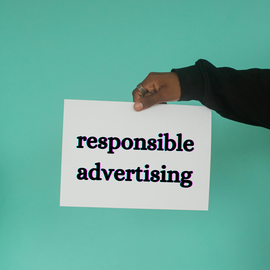Advertising terms glossary: your guide to digital ads
Welcome to the Advertising Terms Glossary, your go-to page for understanding digital advertising! If you’re a small business owner just starting, this guide will explain key terms and metrics in plain, simple language. Ready to dive in? Let’s get started!

Advertising terms glossary – digital advertising (made easy)
- Impression: An impression happens every time your ad appears on someone’s screen. Think of it like your ad saying, “Hello there!”
- Click: A click is when someone taps or clicks on your ad. It’s like they’re saying, “Tell me more!”
- Click-Through Rate (CTR): CTR measures how many people clicked on your ad compared to how many saw it. For instance, if 100 people saw your ad and 5 clicked, your CTR is 5%. Pretty straightforward, right?
- Cost-Per-Click (CPC): CPC tells you how much you’re paying every time someone clicks your ad. The lower your CPC, the happier your wallet will be!
- Conversion: A conversion happens when someone does what you want after clicking your ad. This could be buying something, signing up (called leads), or downloading an app. Basically, it’s your ad doing its job. Google analytics will call it events
- Cost-Per-Conversion: This is the cost of getting one conversion. For example, if you spent £100 on ads and got 10 conversions, your cost-per-conversion is £10.
- Landing Page: The landing page is the website page where people go after clicking your ad. Keep it clear, easy to understand, and maybe even fun!
- Bounce Rate: The bounce rate tells you how many people left your landing page without doing anything. A high bounce rate is like guests walking into a shop and leaving without buying anything. Time to figure out why they’re leaving!
- Retargeting: Retargeting shows your ads to people who have already visited your site or interacted with your brand. It’s like giving them a friendly nudge, saying, “Hey, remember us?”
- Ad Copy: Ad copy is the text in your ad. Great ad copy grabs attention and sparks curiosity. It’s your chance to shine!
- Keywords: Keywords are the words or phrases people search for online. Using the right keywords in your ads helps more people find you. Think of them as the secret sauce of digital advertising.
- Organic Traffic: Organic traffic means people found your website without clicking on an ad. It’s free, but it takes time and effort to build.
- Paid Traffic: Paid traffic happens when people visit your site because of your ads. You’re paying to bring them in, but it’s often worth it if done right.
- Target Audience: Your target audience is the group of people you want to see your ads. For example, if you sell pet toys, your target audience might be pet owners who love spoiling their furry friends.
- Call-to-Action (CTA): A CTA tells people what to do next. Examples include: “Buy Now,” “Learn More,” or “Sign Up Today.” CTAs are like friendly invitations.
- Social Media Ads: These are ads you run on platforms like Facebook, Instagram, or TikTok. They’re brilliant for reaching people where they’re already hanging out.
- Search Ads: Search ads show up when people use search engines like Google. They’re perfect for reaching people who are already looking for what you offer.
- Display Ads: Display ads are the picture or video ads you see on websites or apps. They’re eye-catching and colourful, just like a billboard online.
- Engagement: Engagement means likes, comments, shares, or any interaction people have with your ad. More engagement = more people liking what you’re sharing.
- Reach: Reach is the number of unique people who see your ad. It’s about getting your brand in front of as many eyes as possible.
- Frequency: Frequency is how many times the same person sees your ad. Show it too many times, and people might get annoyed. Show it just enough, and they’ll remember you!
- Viewability: Viewability measures whether your ad was actually seen by people. If it was displayed but not visible on the screen, it doesn’t count. You want high viewability for better results.
- Invalid Traffic (IVT): IVT refers to fake or non-human traffic, like bots, clicking on your ads. It’s bad for your campaign, so platforms work to block it.
- Sophisticated Invalid Traffic (SVIT): SVIT is the smarter version of invalid traffic. It’s harder to detect because it mimics real user behaviour. Tracking and filtering this helps protect your budget.
- Impression Rate: This is the percentage of times your ad was shown compared to how often it could have been shown. A high impression rate means your ad is being delivered often.
- Install Per Mille (IPM): IPM measures how many app installs you get per 1,000 impressions. It’s a key metric for mobile app campaigns.
- Mobile Measurement Partner (MMP): An MMP is a third-party company that helps track and measure your mobile ad campaigns. They ensure you know what’s working and what’s not.
- Programmatic Advertising: Programmatic is a fancy way of saying “automated ad buying.” It uses software to buy and place ads in real-time.
- Bid Rate: Bid rate shows how often your system places a bid for an ad spot. Higher bid rates mean you’re actively participating in auctions.
- Win Rate: Win rate is the percentage of bids you win in auctions. It tells you how competitive your bidding strategy is.
- Bid Loss Reason: This explains why you lost a bid in a programmatic auction. Common reasons include bidding too low or targeting the wrong audience.
- Revenue Per Mille (RPM): RPM measures how much revenue is generated per 1 million ad requests. It’s also called spend rate.

Advertising terms glossary – metrics for responsible advertising
When you run ads responsibly, you don’t just focus on sales. You think about what’s good for people and your business. Here are some key metrics to guide responsible advertising:
- Relevance Score: This score shows how useful and interesting your ad is to your audience. Higher scores mean people like what they see. Keep it relevant and exciting!
- Customer Lifetime Value (CLV): CLV measures how much money a customer will bring your business over time. Building long-term relationships is always better than chasing quick wins.
- Ad Spend Efficiency: This shows how well you’re using your money. Responsible advertising means not wasting cash on ads that don’t work.
- User Feedback: If people report your ad as annoying or irrelevant, listen! Adjust your ads to make them helpful and respectful. Feedback is a gift.
- Sustainability Goals: Track how your ads align with sustainable practices, like promoting eco-friendly products or minimising waste. It’s good for the planet and your brand.

Why this advertising terms glossary matters
Digital advertising can feel tricky at first, but understanding the lingo makes it easier. With this glossary, you can confidently create responsible ads that help your small business grow. Keep learning, experimenting, and having fun, and soon, you’ll master the art of digital advertising!
Is something missing from the advertising terms glossary? Check the Google Analytics support.
Check here our advertising services and contact us for more questions.
